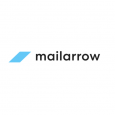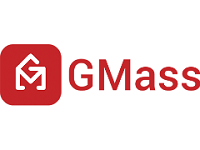Most cold email applications may be accessed from numerous devices and platforms. This is especially useful for users who need to handle cold email campaigns while on the go or transition between devices effortlessly. Popular email software provides desktop and mobile programs, as well as web-based versions that are accessible from any device with an internet connection. This provides consumers with convenience and flexibility, allowing them to stay connected and productive from any location.
List of 20 Best Cold Email Software
Mailarrow is a AI-driven solution for cold email outreach. With its unmatched lead generation features, Mailarrow helps businesses effortlessly generate high-quality leads. No more chasing cold responses, as Mailarrows advanced technology ensures war...Read More Mailarrow
Klenty is is the Outbound Sales Automation software created specifically for inside sales teams. Seamlessly prospect, connect, and pursue leads on a larger scale with direct integration to top CRMs like SalesForce, Pipedrive, and FreshSales. Monitor...Read More Klenty
Woodpecker is a Word add-in designed specifically for legal professionals. With smart templates and online questionnaires, this robust tool streamlines document creation, minimizes errors, and saves time that can be dedicated to client service. Say g...Read More Woodpecker
Hunter.io is email-finding tool that revolutionizes lead generation for businesses. With convenient features like domain search, email verification, and bulk tasks, Hunter.io streamlines the process of finding accurate contact information for potenti...Read More Hunter.io
With QuickMail, streamline your email outreach and reach new prospects effortlessly. Connect your email account, create customized messages, and schedule them to be sent at strategic times. Boost your productivity and expand your business with QuickM...Read More QuickMail
Yet Another Mail Merge – solution for streamlined and personalized email campaigns. With seamless integration with Gmail and Google Sheets, this powerful software transforms your communication and drives engagement. Say farewell to laborious m...Read More Yet Another Mail Merge
Welcome to Smartlead is the software that eliminates the need for cold emails and brings in a steady stream of revenue. With unlimited mailboxes and warm-up capabilities, our versatile multi-channel system gives you the confidence to expand your outr...Read More Smartlead
Success.ai solution for creating and managing email campaigns. Our platform seamlessly connects with multiple sending accounts, making it effortless to send emails from various sources. With Success.ai, personalizing your emails and tracking campaign...Read More Success.ai
Streak, a game-changing CRM platform seamlessly integrated with Gmail. Streamline your operations with features such as project and lead management, mail merge, email tracking, and task reminders. Stay organized and improve efficiency with Streaks in...Read More Streak
Show by Animaker is a outbound email marketing solution. Utilize cutting-edge AI technology to create dynamic campaigns, increase response rates, and surpass your email conversion goals. Take your email marketing to new heights with Show, the essenti...Read More Show By Animaker
SmartWriter - the powerful personalization software that takes advantage of customer data like their Linkedin profile, recent achievements, and industry news, to generate highly personalized icebreakers for outreach. SmartWriters cutting-edge approac...Read More SmartWriter
Saleshandy is a sales engagement platform designed to boost your teams productivity. It offers valuable insights on prospect interactions with your sales material, enabling you to sell more effectively. With Saleshandy, you can track the engagement o...Read More Saleshandy
Autoklose is a sales automation software that will revolutionize your email campaigns. With its seamless CRM integration and comprehensive performance tracking, Autoklose allows sales teams to increase their productivity and focus on closing deals an...Read More Autoklose
Mailgun is a top-notch email platform that provides reliable delivery and easy integration. Ideal for businesses of all sizes, it offers real-time validation and in-depth data analysis, elevating audience interaction and optimizing results. With Mail...Read More Mailgun
SmartReach the email and follow-up automation software that streamlines bulk emailing. Say goodbye to complicated cold email campaigns and hello to improved email deliverability. Our robust automation feature enables you to send personalized emails o...Read More SmartReach
UCampaign solution for all your email marketing requirements. This powerful tool allows you to effortlessly send bulk emails and manage contacts across various platforms. Customize fields for personalized communication and track customer behavior wit...Read More UCampaign
SalesBlink is a email outreach solution powered by BlinkGPT AI technology. Our advanced automation capabilities allow for hassle-free follow-ups in a matter of seconds, eliminating manual effort. With SalesBlink, securing appointments and closing dea...Read More SalesBlink
SendPulse is a must-have tool for optimizing your text message marketing strategies. Its intuitive platform allows you to effortlessly send emails and SMS to your customers mobile phones, create automated campaigns for different projects, and persona...Read More SendPulse
GMass is an exceptional email marketing software that simplifies your mass emailing procedure effortlessly. This powerful tool provides instant notifications, effortless integration with Google Sheets, and the ability to create targeted email lists w...Read More GMass
Reply is a AI-powered sales engagement platform. Streamline your cold outreach with automated processes and multiple mailbox integration. Utilize AI Chat to convert website visitors into scheduled meetings. Empower your sales team with powerful optim...Read More Reply
Learn More About Cold Email Software
- What Is Cold Email Software?
- What Are The Recent Trends In Cold Email Software?
- Benefits Of Using Cold Email Software
- Important Factors To Consider While Purchasing Cold Email Software?
- What Are The Key Features To Look For In Cold Email Software?
- Why Do Businesses Need Cold Email Software?
- How Much Time Is Required To Implement Cold Email Software?
- What Is The Level Of Customization Available In Cold Email Software?
- Which Industries Can Benefit The Most From Cold Email Software?
- Conclusion
What Is Cold Email Software?
Cold email software is a software solution that allows organizations and individuals to automate their cold email outreach activities. It is intended to simplify the process of sending mass emails to prospective clients or consumers, often known as cold emails. Cold email software is primarily intended to improve the efficiency and effectiveness of bulk email distribution.
Email templates, personalization options, email scheduling, and email tracking are common tools that help customers manage their outreach initiatives more effectively. Cold email software allows businesses and individuals to contact a huge number of potential leads or customers in a short period of time. This is extremely handy for salespeople and marketers that need to send personalized emails to a big number of people.
One of the primary benefits of using cold email software is that it promotes consistency and professionalism in email outreach. Users can use pre-designed templates and customizing options to guarantee that all of their emails have a consistent tone and appearance, which aids in the development of a strong brand image. Additionally, cold email software has tools for tracking email opens, clicks, and responses, providing users with vital data into the success of their campaigns.
This information can be utilized to tailor future outreach efforts and increase overall email engagement. Some prominent cold email software applications also integrate with customer relationship management (CRM) systems, allowing firms to better manage and track their leads or prospects.
What Are The Recent Trends In Cold Email Software?
In recent years, organizations of all sizes have increased their use of cold email software. This might be due to the rise of digital marketing and the necessity for efficient and scalable solutions to reach out to potential clients via email. As a buyer, you must be aware of the newest developments in cold email software in order to make an informed selection when selecting a solution.
Here are some of the latest trends in cold email software that you should be aware of.
1. Personalization: One of the most significant changes in cold email software is an emphasis on personalization. Mass emails are no longer successful, and customers need tailored messages that address their unique needs and interests. As a result, several cold email software providers have added personalization tools, such as dynamic fields and personalized subject lines, to assist organizations in creating more focused and effective campaigns.
2. Automation: With the increasing volume of cold emails being sent, automation has become an essential element in cold email software. This enables firms to schedule and send emails automatically, saving time and effort. Furthermore, automation facilitates follow-ups and lead nurturing, making it easier to convert prospects into clients.
3. Integration With CRM And Other tools: Cold email software is no longer sufficient on its own; it must be integrated with other company tools like as CRM software, project management tools, and marketing automation platforms. This enables organizations to streamline their procedures and consolidate all of their client data in one location, making it easier to analyze and measure the performance of their cold email marketing.
4. AI And Predictive Analytics: Another new trend in cold email software is the use of artificial intelligence (AI) and predictive analytics. These modern tools assist organizations in analyzing client data and behavior to determine the ideal timing and frequency to send cold emails. This leads to more effective advertisements and higher conversion rates.
5. Email Deliverability And Compliance: In recent years, spam emails have been reduced, and email marketing rules have become stronger, such as the General Data Protection Regulation (GDPR). As a result, cold email software manufacturers are increasingly focused on email deliverability and compliance to guarantee that emails are not flagged as spam and organizations remain compliant with rules.
Benefits Of Using Cold Email Software
Cold email software is an effective tool for automating and streamlining the process of sending cold emails to prospective consumers. It is a crucial tool for any organization that wants to broaden its reach and produce new leads. In this buyer's guide, we'll go over the advantages of using cold email software, allowing you to make an informed decision when selecting the best software for your business.
1. Increased Productivity And Efficiency: Cold email software allows you to send a big number of targeted emails to your target group while saving time and effort. Advanced automation tools allow you to construct email sequences, schedule emails, and track answers all from one platform. This dramatically boosts your productivity and frees you time to focus on more vital duties.
2. Personalization And Customization: Cold email campaigns rely heavily on personalization, and cold email software provides the tools you need to adapt your communications to each recipient. You may use tools like merge fields, dynamic content, and email templates to generate tailored emails that will appeal to your potential consumers. This results in higher response rates and a greater likelihood of turning leads into clients.
3. Improved Deliverability: Most cold email software providers include built-in mechanisms that ensure your emails arrive in the recipient's mailbox. These functions include email validation, spam detection, and email list cleaning. You may avoid being identified as spam by sending emails through a reputable and trustworthy platform, increasing your chances of reaching your intended audience.
4. Detailed Analytics And Reporting: Cold email software includes advanced analytics and reporting features that allow you to track the effectiveness of your cold email campaigns. You may track metrics like open rates, click-through rates, and response rates to gain useful insights into the efficacy of your campaigns. This information might help you optimize your emails and campaigns to achieve better outcomes.
5. Low-Cost And effective: Cold email software is a less expensive lead generation solution than traditional marketing tactics like print or television commercials. It eliminates the need for physical labor while lowering the cost of printing and delivery. With a variety of pricing options and plans available, you may select a package that meets your budget and company requirements.
6. Integration With Other Tools: Most cold email software is compatible with other sales and marketing tools, such as CRM and social media platforms. This connection streamlines your process and centralizes your prospecting activity. You can effortlessly transfer leads from your email campaigns to your CRM, making it easier to manage and nurture them.
Important Factors To Consider While Purchasing Cold Email Software?
When looking to acquire cold email software, there are a few crucial elements to consider that will help you make the best option for your company. Here are some crucial considerations to consider when selecting cold email software:
1. Functionality: The first and most significant consideration is the functionality provided by the cold email program. Make sure to carefully assess the features to see if they meet your company's needs. Some key features to check for are email templates, personalization choices, email tracking, automated follow-ups, and interaction with other programs.
2. Deliverability: One of the most important parts of cold email outreach is delivery rate. Before making a purchase, examine the software's deliverability score and read reviews from existing users. A high deliverability rate ensures that your emails do not wind up in the spam folder and really reach their intended recipients.
3. Personalization Options: Each organization has its own set of needs and preferences, thus cold email software should allow for personalization. This could include the ability to personalize emails, build unique themes, and segment your email list using certain criteria.
4. User-Friendliness: The last thing you want is to buy sophisticated cold email software that takes hours to configure and learn. Look for user-friendly software with a basic interface. This will save you both time and resources in the long run.
5. Price: The cost of cold email software can vary substantially, therefore it's critical to assess your budget and compare pricing from various vendors. Keep in mind that the cheapest option is not always the best, so weigh the value and features supplied against the price.
6. Customer Support: If you encounter any problems or have queries regarding the product, it is critical to have access to dependable customer service. Look for software vendors who give excellent customer service over several channels such as email, phone, and live chat.
7. Reputation: Finally, study the reputation of the cold email software vendor. Check online reviews, seek referrals from other business owners, and discover if the supplier holds any accreditations or honors. By taking these crucial elements into account, you can make an informed selection when selecting cold email software and select the one that best meets your company's requirements. Take the time to carefully consider your alternatives, and you'll be on your way to a successful and efficient cold email marketing campaign.
What Are The Key Features To Look For In Cold Email Software?
When it comes to cold email software, there are some crucial characteristics to consider before purchasing. These elements are critical for the success and efficacy of your cold email campaigns. Here are the key characteristics to look for in cold email software:
1. Email Automation: This tool enables you to create and schedule personalized emails to be delivered automatically. This not only saves time, but also assures prompt follow-up emails, which increases the likelihood of a response.
2. Personalization: The option to personalize your cold emails with unique fields such as name, company, and job title can significantly increase open and response rates. Look for software that enables easy modification and customizing.
3. A/B testing: With A/B testing, you may compare multiple subject lines, email templates, and call-to-actions to discover which performs best. This can help you improve your cold email outcomes.
4. Email Tracking: Tracking your cold emails is critical for measuring the effectiveness of your marketing. Look for email monitoring software that will allow you to know who has opened your emails and clicked on any links inside them.
5. List Creation And Management: The ability to create targeted lists and efficiently manage them is an important feature to look for in cold email software. This will allow you to target the appropriate audience and keep your email lists structured.
6. CRM And Other Tool Integration: Ensure that the cold email program you chose is compatible with your Customer Relationship Management (CRM) tool as well as other productivity applications such as Google Calendar and Slack. This will improve your process and save time.
7. Spam Detection: Nobody wants their cold emails to go in the spam folder. Look for software that includes spam detection to ensure that your emails reach the recipient's mailbox.
8. Campaign Analytics: Analytics are useful for determining the success of your efforts and finding areas for improvement. Look for software that offers extensive analytics and reporting for your cold email marketing.
9. User-Friendly Interface: A user-friendly interface is required for easy navigation and operation of the product. Look for software that is simple to use and has a clean, straightforward interface.
10. Customer Help: Last but not least, check sure the cold email program includes dependable customer support. This will ensure that any technical issues or questions are swiftly resolved, allowing you to continue with your email campaigns without interruption.
Why Do Businesses Need Cold Email Software?
Cold email software is a strong tool that may help organizations streamline their email outreach and prospecting activities. This type of software is specifically developed to assist businesses communicate with potential customers via targeted and tailored emails, eliminating the need for manual and time-consuming efforts. But why should firms use cold email software? Let's go into some of the main reasons:
1. Outreach Efficiency And Scalability: Many businesses struggle to manage their prospecting activities and reach out to a big number of potential clients. Cold email software automates the process and enables effective and scalable outreach, boosting the likelihood of connecting with interested prospects.
2. Personalization: With the rise of email marketing, personalisation has become an essential component of effective outreach. Cold email software frequently incorporates complex personalization tools like as merge tags, which enable organizations to modify their emails to specific recipients, increasing engagement and effectiveness.
3. Targeted And Quality Leads: Unlike traditional email marketing, cold email software enables organizations to target specific audiences based on job title, industry, or region. This allows organizations to target high-quality leads who are more likely to be interested in their product or service, resulting in improved conversion rates.
4. Time And Cost Savings: Manual email marketing may be arduous and time-consuming, forcing firms to devote substantial resources to locating and contacting new consumers. Cold email software reduces this effort, saving organizations time and money that can be redirected to more vital parts of their operations.
5. Detailed Statistics: Cold email software uses detailed statistics to help organizations analyze the performance of their email campaigns. Businesses may track open rates, click-through rates, and other key indicators, helping them to tailor their outreach efforts for better outcomes.
How Much Time Is Required To Implement Cold Email Software?
Implementing and utilizing cold email software, like any other new software or application, requires a learning curve. The time necessary for installation will vary based on the program used and your level of familiarity with email marketing. However, there are some general procedures you should expect to take when implementing cold email software.
1. Familiarize Yourself With The Software: Before you begin using it, spend some time exploring its features and capabilities. This will help you understand how it works and how it can improve your email marketing efforts.
2. Set Up Your Account And Email Templates: Most cold email tools will require you to create an account and personalize your email templates. This can take anything from a few minutes to an hour, depending on how complex the software is and how many templates you need to make.
3. Import Your Contacts: The following step is to load your contact list into the app. This can be accomplished by uploading a CSV file or manually entering each contact. The time necessary for this will vary according to the size of your contact list.
4. Create Your Email Campaigns: Once your contacts have been imported, you can begin constructing email campaigns. This could include composing and designing emails, creating automated sequences, and conducting A/B testing. Depending on the complexity of your campaigns, this could take anything from a few hours to many days.
5. Test And Deploy Your Campaigns: Before sending out your emails, make sure they work properly and appear accurately on various devices. It may take many hours to confirm that everything is working properly. Overall, implementing cold email software might take anything from a few hours to a few days, depending on the software's sophistication and your level of knowledge. you achieve the best results, make sure you carefully set up and test your campaigns. Once you've become acquainted with the program and have a thorough understanding of its functions, you can begin using it to increase your email marketing campaigns.
What Is The Level Of Customization Available In Cold Email Software?
The level of customization possible in cold email software varies depending on whatever software you use. However, most cold email software provides extensive customization possibilities, allowing customers to adapt their campaigns to meet their individual objectives and target demographic. One of the most important customization options in cold email software is the ability to generate individual email templates.
This enables you to include custom fields and merge tags in your email, such as the recipient's name or company, making each message feel more personalized and relevant. Furthermore, many cold email software packages provide complex segmentation tools, which allow you to categorize your contacts based on specified criteria and send tailored emails to each segment.
This level of personalization can significantly increase the efficacy of your efforts by ensuring that the correct message is sent to the appropriate target. Furthermore, some cold email software has A/B testing capabilities, allowing you to compare multiple email subject lines, body content, and call-to-actions to see which one performs best.
This tool enables you to continuously enhance and personalize your emails based on real data and results. Finally, many cold email software allows you to customize tracking and analytics settings. This allows you to track the performance of your emails in real time and alter your strategy accordingly.
You can also use the data to learn more about your audience's preferences and activities, allowing you to tailor your advertising even more effectively. In summary, cold email software offers tremendous customization, allowing you to tailor your emails, target specific customers, and continuously refine your campaigns for optimal performance.
Which Industries Can Benefit The Most From Cold Email Software?
Cold email software has transformed how businesses engage with potential consumers, making it one of the most effective tools for sales and marketing teams. Cold email software has become an indispensable tool for organizations of all sizes and industries, thanks to its capacity to contact a huge number of prospects at a low cost. However, certain sectors can gain even more from adopting cold email software.
Let us take a closer look at which industries will gain the most from this new solution.
1. E-Commerce In the increasingly competitive e-commerce market, where clients are flooded with promotional emails on a daily basis, cold email software can help firms stand out and increase sales. With its powerful targeting and personalization tools, e-commerce enterprises may send targeted and tailored emails to potential customers, boosting the likelihood of them becoming paying clients.
2. B2B CompaniesL can also benefit substantially from cold email software. Cold emails can help B2B organizations generate leads, schedule appointments, and complete sales more quickly since they can reach many decision-makers inside a company. Cold email software can also assist B2B organizations in developing long-term relationships with their customers by sending personalized and relevant follow-up emails.
3. Consulting & Services: Cold email software can help consulting and service-based companies create contacts and network with possible clients and partners. Cold email software, with its automated follow-up and scheduling tools, can help these businesses streamline communication and nurture prospects more efficiently.
4. Real Estate: Cold email software can be a game changer in the highly competitive real estate sector, helping to locate new clients and close deals. With the capacity to send bulk emails to a specific group, real estate brokers can swiftly reach out to potential buyers and successfully promote their homes. Cold email software also enables effective communication with clients during the purchasing and selling process.
5. Recruitment: And HR Cold email software allows recruiting and human resources (HR) teams to streamline their hiring procedures and reach a bigger pool of potential candidates. Using personalized and targeted cold emails, recruiters can attract top talent and keep potential recruits engaged throughout the hiring process.
Conclusion
After evaluating and researching various cold email software, we believe that selecting the best one for your company will significantly boost your email marketing approach. With the appropriate software, you can streamline your cold email campaigns, improve outreach efficiency, and ultimately get greater results. When deciding which cold email program to use, it is critical to thoroughly assess its features and functionality, pricing alternatives, usability, and customer support.
To identify which software is most suited to your specific business objectives and goals, you must first understand them. Some important features to look for in cold email software include email personalization, automated follow-ups, A/B testing, and CRM connectors. Another significant consideration is the software's capacity to adhere to email marketing rules such as GDPR and CAN-SPAM laws.
Furthermore, pricing should be considered, since some software may provide better value for money, while others may charge more for greater capabilities. Before making a decision, consider your budget and the expected return on investment from the program. Furthermore, user friendliness is critical to the success of any software.
To maximize the benefits of its capabilities without a high learning curve, look for software with a user-friendly interface, simple navigation, and clear instructions. Finally, customer service is critical in the event of any technical issues or concerns. Look for software that provides consistent and timely customer service over a variety of channels such as live chat, email, and phone.
Finally, investing in cold email software can significantly improve your email marketing efforts and drive business growth. Before making a decision, carefully consider the features, pricing, user-friendliness, and customer support to guarantee you get the best cold email program for your individual requirements.
Cold Email Software FAQ's
Can Cold Email Software Be Accessed Across Multiple Devices And Platforms?
Is Cold Email Software Future-Proof And Adaptable To Emerging Technologies Like Ai, Blockchain or Iot?
Cold Email Software is continually evolving to keep up with emerging technologies such as artificial intelligence, blockchain, and the Internet of Things. These solutions use AI algorithms to analyze and personalize email content, resulting in greater response rates. These apps can provide safe and transparent communication using blockchain technology.
And, with the rise of IoT, these solutions can interface with other platforms, giving you even more options to reach potential customers. Rest assured, Cold Email Software is evolving to keep ahead of the competition.
Is There A Free Trial Offered To Assess Cold Email Software Before Committing?
Yes, most cold email software businesses include a free trial period so that users can evaluate the product before committing to a paying subscription. This trial period normally lasts 14 to 30 days, allowing users enough time to test out the features and determine whether the software satisfies their requirements. Some organizations additionally provide a demo or demo video to provide customers a better understanding of the software's capabilities.
Does Cold Email Software Offer Data Security Features And Meet Regulatory Compliance Standards?
"Yes, most respectable cold email software includes data security safeguards and complies with regulatory norms. These features may include data encryption, two-factor authentication, and adherence to GDPR and CAN-SPAM regulations. It is critical to use a reputable cold email software that prioritizes data security and adheres to industry rules."
Can Cold Email Software Integrate Seamlessly With Existing Tools And Platforms?
Yes, most Cold Email Software integrates seamlessly with existing tools and platforms including Gmail, Outlook, HubSpot, and more. Users may now access their contacts and information directly from their preferred platform, removing the need for manual data entry. Some Cold Email Software also integrates with CRM systems, marketing automation tools, and other corporate solutions to improve workflow and efficiency.






















